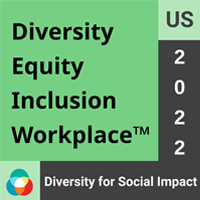Blog


Is Virtual and Augmented Reality the Future of Remote Work?
As the remote work landscape evolves, innovative technologies like the Apple Vision Pro are setting the stage for a revolution in how global teams collaborate and operate. Virtual Reality (VR) and Augmented Reality (AR) are becoming technologies that anyone can have and utilize at home on a daily basis.
Virtual reality technology, such as devices like the Oculus Quest, can create fully immersive virtual workspaces. These environments simulate an office setting, complete with virtual desks, meeting rooms, and collaboration spaces. Employees can “walk” into a VR office, interact with colleagues via avatars, and engage in real-time collaboration as if they were physically together. This setup is particularly beneficial for roles that benefit from spatial understanding and 3D modeling, such as architecture and design.
Augmented reality, as seen with the Apple Vision Pro, overlays digital information onto the real world, enhancing one’s physical environment with virtual details. AR can transform a simple work-from-home setup by projecting digital screens, data displays, and interactive elements into physical space. This technology allows for more dynamic presentations, where data and graphics appear as holograms in your actual room, which can be manipulated and discussed in real time by team members across the globe.
Both VR and AR offer robust solutions for training and professional development. VR provides a risk-free environment for training in high-stakes fields like healthcare and engineering, where users can practice procedures or manipulate complex machinery without real-world consequences. Meanwhile, AR can offer step-by-step tutorials overlaid onto the equipment or tools employees are using, enhancing the learning process and ensuring accuracy in real-time.
With technologies like VR and AR, remote work can become more engaging and less isolating. These tools make it possible to conduct interactive workshops, brainstorming sessions, and team-building exercises that are more engaging and closer to real-life interactions. For instance, an AR application can allow a designer to see how a piece of furniture looks and fits in a space before it is manufactured, making the design process more interactive and precise.
At Thankz, we recognize the transformative potential of VR and AR technologies in remote work environments. We are at the forefront of technology to make having a remote, global team easier than ever.
From identifying talent to onboarding, we manage the entire process. With our expertise, you can avoid the complexities and expenses of managing international payroll and legal issues. This allows you to free up your resources to concentrate on your business.
For more information on how Thankz can transform your approach to global hiring, visit our website or contact us directly. Let’s make the world your office together.


![[Veteran or Service-Disabled Veteran] Disability-Owned Business circular certification badge with text shown in circular orientation and with Disability:IN icon logo in center](https://www.thankz.com/blog/wp-content/themes/thankz/images/dobe-badge.png)

